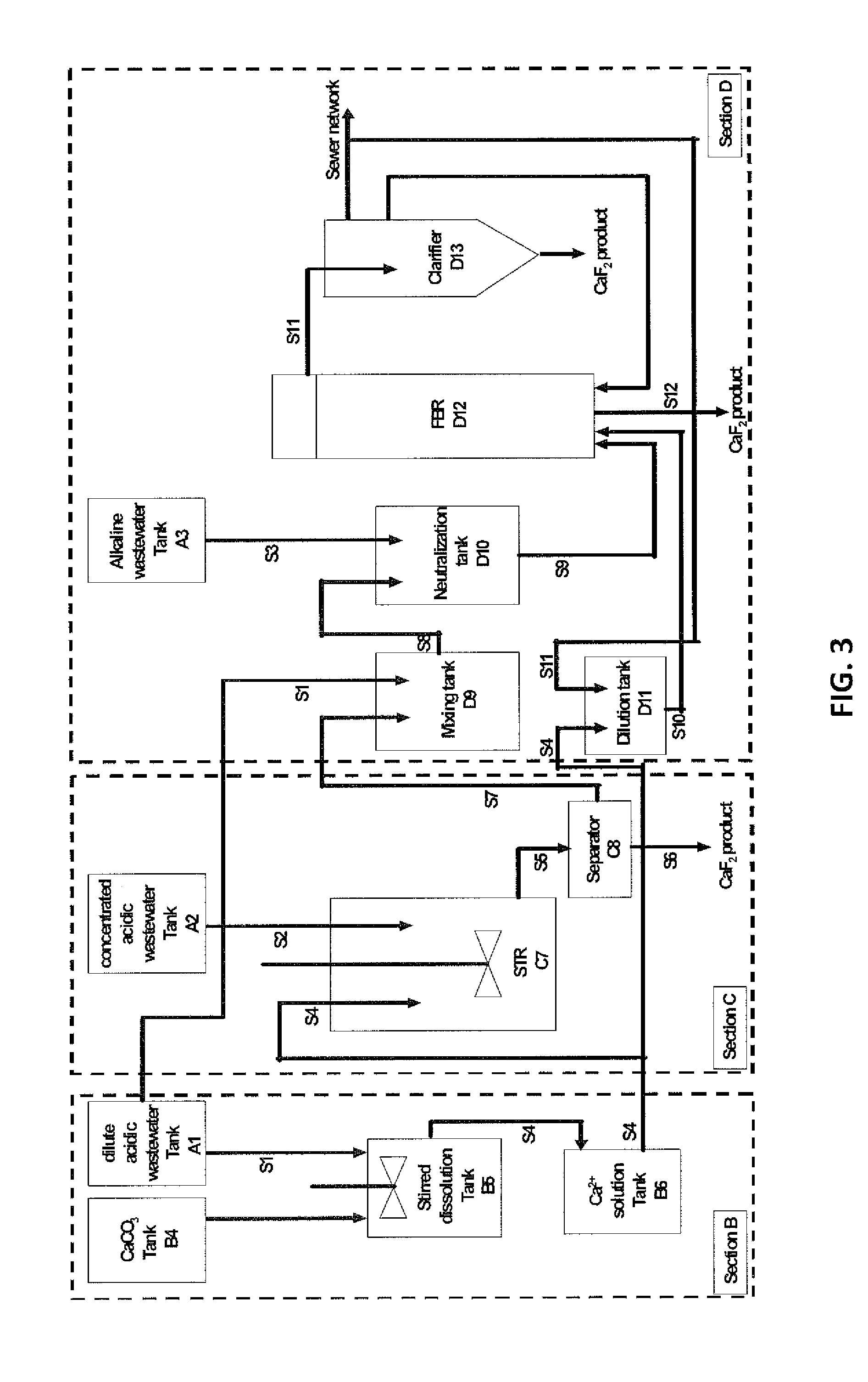Process for recovery of fluoride from wastewater produced in crystalline silicon solar cell manufacturing
a technology of solar cell and wastewater, which is applied in the nature of treatment water, sedimentation settling tanks, separation processes, etc., can solve the problems of high cost, high cost, and high cost of solar cell manufacturing, and achieves high efficiency and high purity. the effect of reducing the amount of calcium fluoride sludge was
- Summary
- Abstract
- Description
- Claims
- Application Information
AI Technical Summary
Benefits of technology
Problems solved by technology
Method used
Image
Examples
example
[0083]A monocrystalline silicon solar cell manufacturer located in Jiangsu province of China was chosen for the demonstration.
Section A
[0084]In this section, a holistic look at the entire manufacture process of the silicon solar cell was taken to identify the various waste streams in the process. Raw wastewater samples were collected on a tank-by-tank basis, and the physico-chemical parameters, such as the pH value, the concentration of fluoride, chemical oxygen demand (COD), total nitrogen (TN), nitrate (N—NO3) and total phosphorus (TP), of the wastewater samples were measured. The analytical data of the major effluents generated at different tanks are presented in Table 1.
TABLE 1The quality parameters of the wastewater generated at different tanksTankspHCODN—NH4+Total PTotal NF−TexturizationTank 113.24880.0917.812.9137Tank 213.8570000.4417.4654104Tank 39.80.170.0520.52.93Tank 41.20.2753.70.47Tank 51.70.100.0238.5172Tank 61.26980.0812.719800Tank 76.50.0423.31.19PSG removalTank 81.3...
PUM
| Property | Measurement | Unit |
|---|---|---|
| concentration | aaaaa | aaaaa |
| concentration | aaaaa | aaaaa |
| concentration | aaaaa | aaaaa |
Abstract
Description
Claims
Application Information
 Login to View More
Login to View More - R&D
- Intellectual Property
- Life Sciences
- Materials
- Tech Scout
- Unparalleled Data Quality
- Higher Quality Content
- 60% Fewer Hallucinations
Browse by: Latest US Patents, China's latest patents, Technical Efficacy Thesaurus, Application Domain, Technology Topic, Popular Technical Reports.
© 2025 PatSnap. All rights reserved.Legal|Privacy policy|Modern Slavery Act Transparency Statement|Sitemap|About US| Contact US: help@patsnap.com



